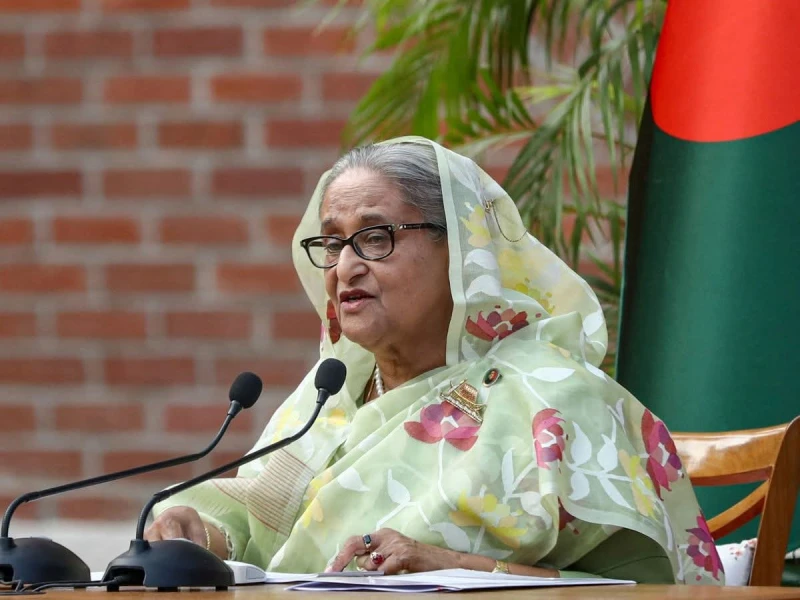No political figure in Bangladesh has stayed in power as long as Sheikh Hasina — nor has any head of government lived for years under the looming risk of a death sentence. Her political rise, fall, and dramatic conviction paint one of the most extraordinary arcs in the country’s history.
Sheikh Hasina inherited her political legacy from her father and rose to prominence through the pro-democracy movement against autocracy, eventually ascending to the peak of state power. But the same leader who championed democratic struggle was later ousted in the bloody “24 July Uprising” and fled to India.
After ruling for more than 12 consecutive years, she was convicted of crimes against humanity by the International Crimes Tribunal (ICT) and became a fugitive death-row convict.
Following a four-month trial, the ICT-1 delivered its verdict on Monday. Tribunal Chairman Justice Md Golam Mortuza Majumdar said there was “clear” evidence that Hasina had issued “inciting statements” and “orders” to eliminate political opponents, leading to killings carried out by her party activists.
While past Bangladesh leaders have faced punitive measures, none had ever confronted a death penalty. Former President Ershad and former Prime Minister Khaleda Zia were arrested and imprisoned at different times, but neither faced capital punishment or had to flee abroad.
Hasina began her political path as a student leader, active in the Chhatra League at Eden College and Dhaka University. Her family was imprisoned during the Liberation War. After living abroad following the assassination of Bangabandhu, she returned in 1981 to lead the Awami League and later became a central figure in the pro-democracy movement against the caretaker government.
Her long tenure in power brought economic and social development, though opposition groups alleged democratic backsliding and human rights violations. She also suffered impaired hearing after the 2004 grenade attack.
On 5 August 2024, she was forced to step down amid a student-led mass uprising. Constitutional amendment debates began in December, reigniting disputes over the next election.
The tribunal sentenced her to death, ruling that she bore responsibility for the killing of 1,400 people under her command. She was also found guilty as a mastermind under “superior command responsibility” and “joint criminal enterprise.”
Former Home Minister Asaduzzaman Khan Kamal was also sentenced to death. Prosecution witness-turned-state collaborator Sabasi Mamun received five years’ imprisonment.
The court ordered the seizure of their assets and the establishment of a compensation fund for the families of the dead and the injured.
The verdict came on her wedding anniversary — she married M. A. Wazed Miah on 17 November 1967.
Reacting from India shortly after the verdict, Hasina claimed, “This process was carried out with the malicious intent of removing me and making me politically irrelevant.”
Sheikh Hasina’s long political odyssey — from student leader to prime minister, from exile to a death sentence — remains one of the most dramatic chapters in Bangladesh’s political history.


-1763396288.webp) Prev Post :
Prev Post :
